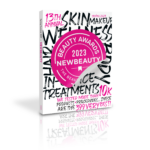The adage “a scar tells a story” is often used to represent the unique scars on our bodies. They feel unique because they are unique, quickly becoming a part of our past and forming in such a way that they are also a part of our future. I wish I could say I wore my scars proudly, but the ones on my stomach, from emergency gallbladder surgery as a teen, kept me covered up during my formative years in the midriff-baring ‘90s. While my C-section scar rarely crosses my mind, the remnants of liposuction and a breast reduction surgery occasionally make me feel like a living Raggedy Ann doll. But over time, they’ve just become a part of me. As my map of scars keeps growing, the ways to minimize them does, too. Here, techniques experts are using to rewrite the story on scars.
DID YOU KNOW?
According to the American Academy of Dermatology, about 100 million people develop scars each year in the United States alone.
Anatomy of a Scar
A scar’s story begins with its formation, which is a complex process involving different types and characteristics. Chevy Chase, MD dermatologist Maral Skelsey, MD says the protocol for scar treatment is highly dependent on whether it’s a depressed scar, an acne scar or an elevated hypertrophic scar. “The scar’s characteristics, age and location help us determine the most effective treatment,” she explains. “For elevated scars, laser treatments are often recommended, while depressed scars may require dermal grafts or alternative approaches to fill them in.”
Healing Stages
Hopkinsville, KY dermatologist Dr. May Hall tells us there are three primary phases of scar healing: Inflammation, proliferation and remodeling.
“The first stage of the process, inflammation, happens in the first five days of wound healing,” she explains. “This is an important time where various inflammatory markers such as neutrophils and macrophages serve as the ‘clean-up crew’ for skin tissue. Signal growth factors and cytokines also promote wound healing.”
The second phase is known as the proliferative phase, Dr. Hall explains, and spans approximately from day five to 15. “Re-epithelialization occurs during this time, wherein the outermost layer of skin cells regenerate and cover a wound. Skin cells migrate from the edges of the wound toward the center until it is fully covered. This is when collagen is deposited into the skin, which strengthens the scar.” This process happens gradually and allows the scar to evolve and mature, eventually blending more seamlessly with the surrounding skin.
Early Intervention
“During the acute wound-healing phase in the first three weeks, I recommend using Vaseline or CeraVe Healing Ointment daily,” says Dr. Hall. “These products avoid ingredients that can cause allergic reactions.” After the wound closes, Dr. Hall suggests using silicone or scar therapy gel. Additionally, you don’t need to wait until the scar is fully healed to start in-office treatments. Denver dermatologist Joel L. Cohen, MD says, “We’re treating surgical scars much earlier and seeing better results because we’re intervening while they’re still remodeling.”

Post-op Healers: Vaseline Healing Jelly ($8), Alastin ReFORM & RePAIR COMPLEX ($240) and Episof Silicone Gel ($80)
Skin Tints
Concealer can only do so much to hide a scar. Cosmetic tattooing steps in by adding pigment to the skin, softening the stark contrast between the scar and the surrounding tissue. “The goal is to blend in the scar,” says aesthetician and medical tattoo artist Priscila Iwama. “I tattoo permanent makeup in a delicate manner, which helps stimulate collagen and protect the skin’s integrity.” Her dermopigmentation technique involves depositing small amounts of ink in the shallow dermis, for a quick, bleed-free procedure. “I often work with my clients’ physicians to ensure that the scar is stable and that any necessary treatment, such as microneedling or laser therapy, has been completed ahead of time to reduce scar thickness.”

Dr. Cohen performed two ProFractional laser resurfacing treatments on this patient to smooth out her surgical scar.
Dual Therapies
Miami facial plastic surgeon Paul Afrooz, MD frequently incorporates noninvasive treatments into his post-facelift protocol. “We leverage devices such as our MOXI and ProFractional lasers, and SkinPen microneedling with platelet-rich plasma,” he says. “These techniques resurface the skin by reducing scar tissue and promoting collagen and elastin production, resulting in smoother, less-noticeable incisions.”
For acne scars, Dr. Cohen frequently uses two technologies in a series of sessions. “For patients still getting a lot of inflammatory acne, I like to do a combination of Accure acne laser treatments with sessions of Morpheus8 radio-frequency microneedling for the scars themselves.” Dr. Cohen adds that EXION is a new technology that has a radio-frequency microneedling handpiece that employs AI to minimize patient discomfort. He treats “road rash” scars with same-day laser therapy, combining a Q-switched laser like ZYE with fractional ablative resurfacing like ProFractional. Other laser and RF microneedling combos used to treat scars include Matrix RF or Virtue RF, along with lasers like CoolPeel.

Southlake, TX dermatologist Janine Hopkins, MD used the Fotona fractional laser to make this patient’s scar less visible and improve skin texture.
Remodeling Techniques
Is it possible to cut out a scar? And does that mean replacing one scar with another? The answer to both questions is yes. Scars that do not heal properly, and raised or keloid scars, may be resistant to other treatments. To revise scars, surgeons often make small incisions to remove scar tissue, then rejoin the skin with fine sutures. Gulf Shores, AL facial plastic surgeon E. Gaylon McCollough, MD explains, “For extremely wide scars, tissue expansion is often required prior to the first stage of surgical excision. Another option is called serial excision, which involves an initial excision and closure under tension, followed by a second or third excision several months later.” This process gradually stretches the surrounding skin, allowing healthier tissue to replace the scar and start a new chapter in the scar’s story.

